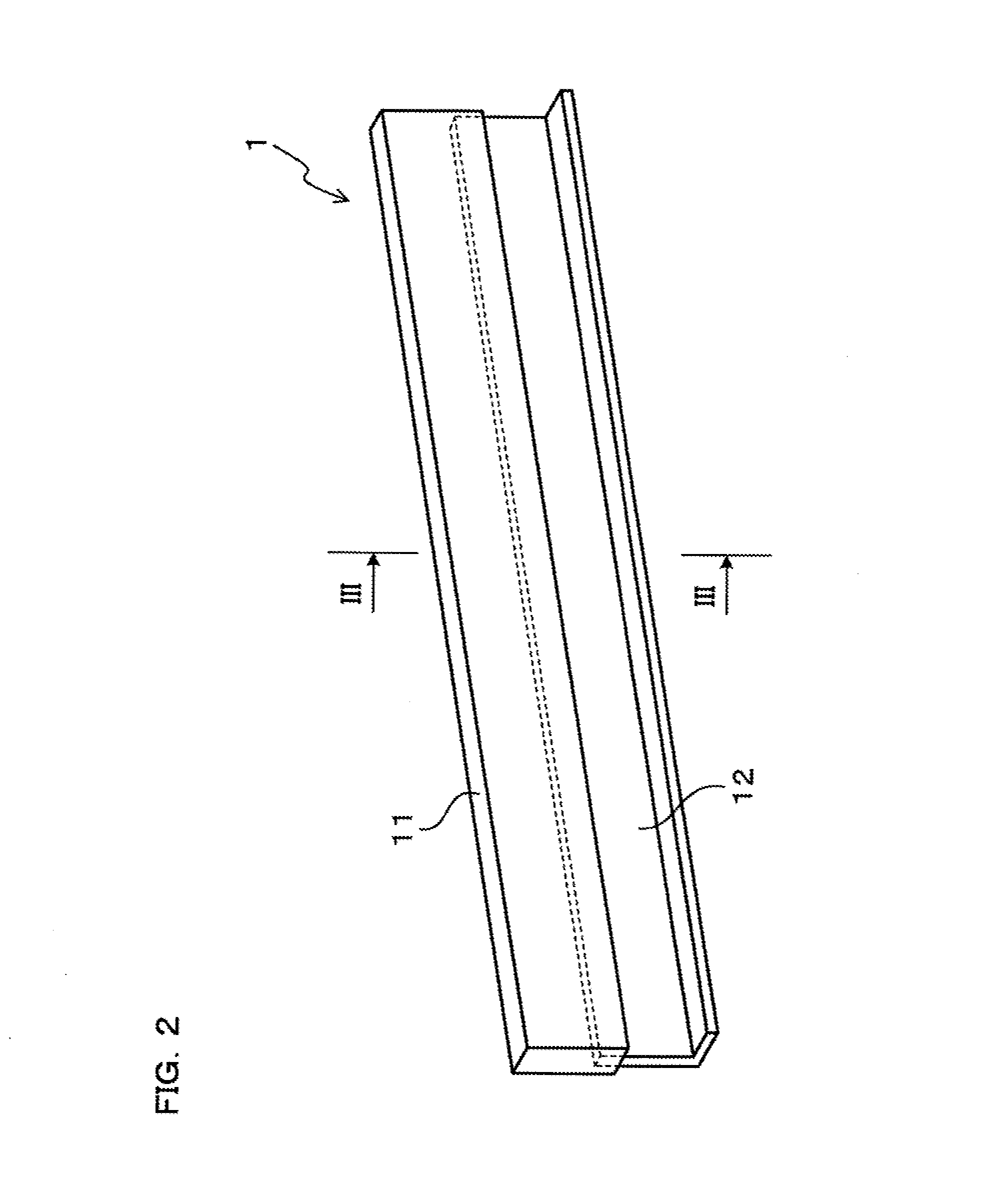Method for producing blade member
a blade and blade technology, applied in the direction of coatings, instruments, optics, etc., can solve the problems of difficult removal of cured products, poor stability of surface treatment liquid, and inability to use for a long time, so as to improve the rate of impregnation of surface treatment liquid into the blade portion, the effect of suppressing the polymerization reaction
- Summary
- Abstract
- Description
- Claims
- Application Information
AI Technical Summary
Benefits of technology
Problems solved by technology
Method used
Image
Examples
embodiment 1
[0054]A method for producing a blade member of Embodiment 1 is described with reference to FIG. 1 to FIG. 3. As illustrated in FIG. 1 to FIG. 3, the method for producing a blade member of the present Embodiment is a method for producing a blade member 1 to be used for removal of residual toner 3 remaining on a surface of a counterpart member 2 in an electrophotographic image forming device, by sliding contact with the counterpart member 2.
[0055]In the present Embodiment, the counterpart member 2 is specifically a photoreceptor drum in the electrophotographic image forming device. The blade member 1 includes a blade portion 11. Specifically, the blade member 1 includes the blade portion 11, and a holding portion 12 that holds the blade portion 11, on the rear end portion of the blade portion 11. The blade member 1 serves as a cleaning blade to scrape off and remove the residual toner 3 (including not only toner but also a toner external additive) remaining on a surface of the photore...
experimental example 1
Preparation of Urethane Rubber Composition
[0060]Forty four parts by mass of polybutylene adipate (PBA) subjected to defoaming in vacuum (“Nippolan 4010” manufactured by Nippon Polyurethane Industry Co., Ltd.) and 56 parts by mass of 4,4′-diphenylmethane diisocyanate (MDI) (“Millionate MT” manufactured by Nippon Polyurethane Industry Co., Ltd.) were mixed at 80° C. for 1 hour, and reacted under a nitrogen atmosphere at 80° C. for 3 hours to thereby prepare a main agent liquid including a urethane prepolymer. Herein, the NCO % (% by mass) in the main agent liquid was 17.0%.
[0061]In addition, 87 parts by mass of polybutylene adipate (PBA) (“Nippolan 4010” manufactured by Nippon Polyurethane Industry Co., Ltd.), 13 parts by mass of a low molecular weight polyol obtained by mixing 1,4-butanediol (manufactured by Kitamura Chemicals Co., Ltd.) and trimethylolpropane (manufactured by Nisso Shoji Co., Ltd.) in a molar ratio of 6:4, and 0.01 parts by mass of triethylenediamine (manufactured b...
PUM
| Property | Measurement | Unit |
|---|---|---|
| reaction temperature | aaaaa | aaaaa |
| temperature | aaaaa | aaaaa |
| RH | aaaaa | aaaaa |
Abstract
Description
Claims
Application Information
 Login to View More
Login to View More - R&D
- Intellectual Property
- Life Sciences
- Materials
- Tech Scout
- Unparalleled Data Quality
- Higher Quality Content
- 60% Fewer Hallucinations
Browse by: Latest US Patents, China's latest patents, Technical Efficacy Thesaurus, Application Domain, Technology Topic, Popular Technical Reports.
© 2025 PatSnap. All rights reserved.Legal|Privacy policy|Modern Slavery Act Transparency Statement|Sitemap|About US| Contact US: help@patsnap.com



